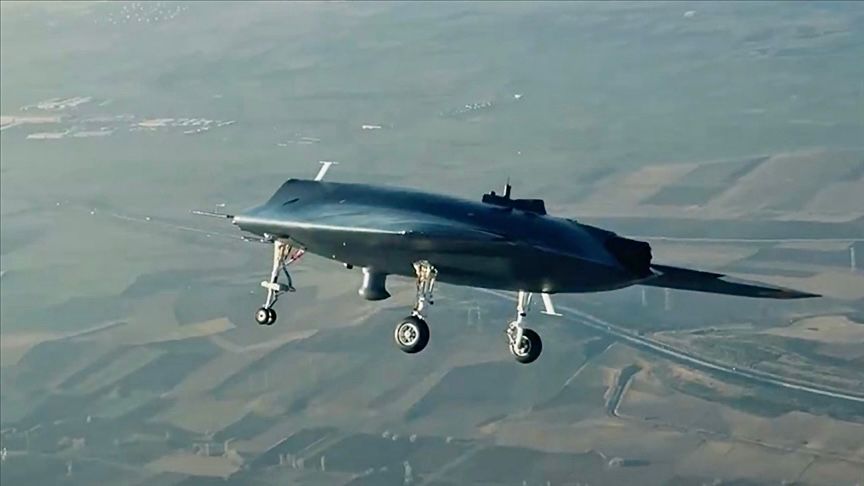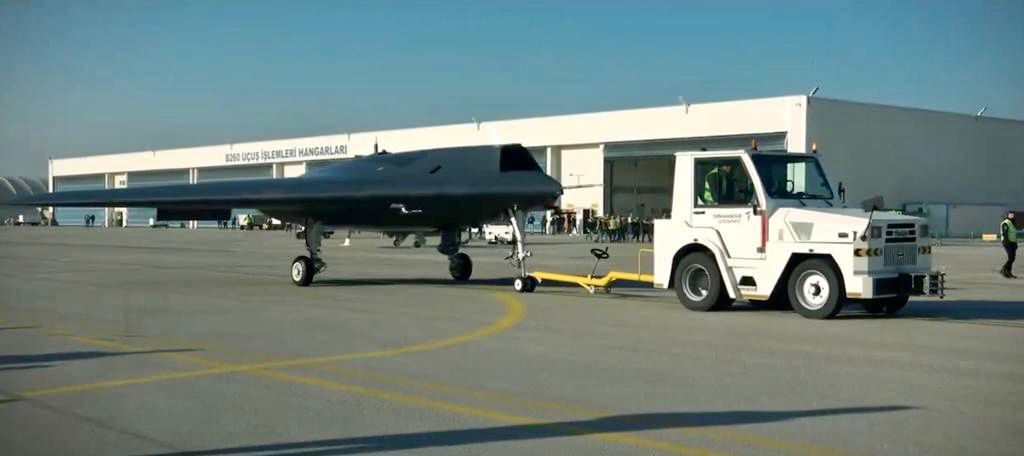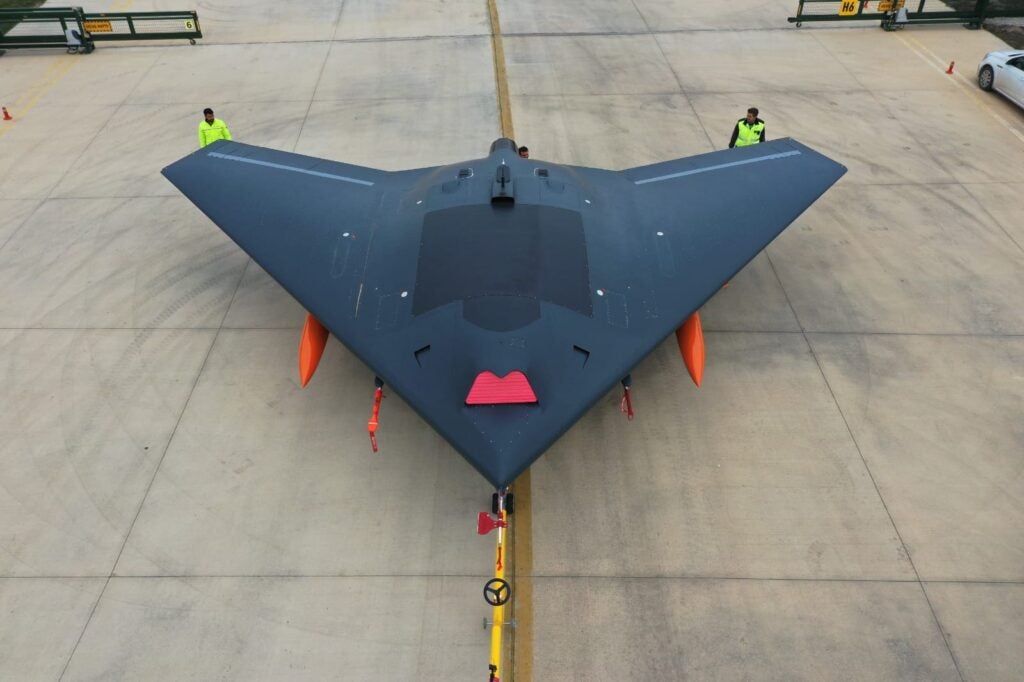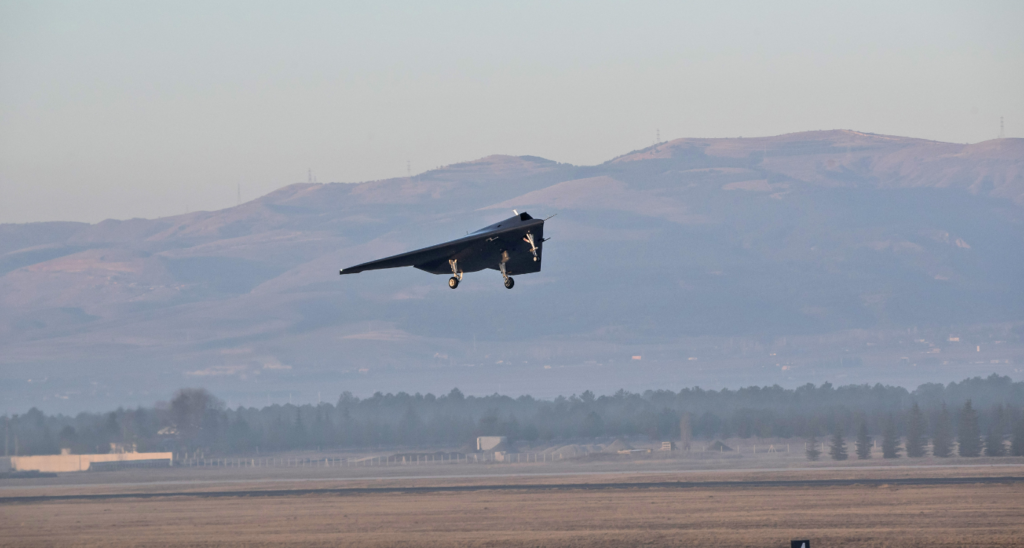TAI’s ANKA-III Unmanned Combat Aerial Vehicle Performed Its First Live Firing
Turkish Aerospace Industries (TAI) has reached another important milestone in its Flying Wing Unmanned Combat Aircraft development program. With an X post shared on September 20, the company announced that the ANKA-3 conducted its first live-fire test. Within the scope of the test, the unmanned combat aircraft, equipped with ASELSAN’s AF500 Electro-Optical camera, successfully hit the target with the Teber-82 Guidance Kit developed by ROKETSAN.
Haluk Gorgun, President of the Turkish Defence Industry, posted the following statement on his social media account after the successful test: ‘ANKA 3 is now a striking force. With its high payload carrying capacity, tailless structure, and low radar cross-sectional area, ANKA 3 will fulfill the most critical missions when necessary. We sincerely congratulate all the teams who developed the technologies that made the firing test successful.’
TAI first announced its intention to produce a flying-wing unmanned Combat Aircraft on December 24, 2015, at a panel titled ‘Turkey’s UAV Road Map with Developing Technologies’, organized jointly by SETA, SSB, and STM. Afterward, no information regarding the project was shared with the public for a long time. Until December 16, 2022, when Turkish Vice President Fuat Oktay announced at the General Assembly of the Grand National Assembly of Turkey, ‘We will continue to share the good news from our ANKA-3 MIUS project with our nation next year.’ Approximately one year after this announcement, the first images and specifications of the aircraft prototype were shared with the public. Toward the end of the same year, the Anka-3 completed taxi tests and its first flight. Anka-3, which stayed in the air for 1 hour and 10 minutes on its first flight, reached an altitude of 8,000 feet during the test.

According to Dr. Mehmet Demiroğlu, CEO of TAI, the prototype of the Anka-3 will be delivered to the Turkish Air Force after all tests in the first months of 2025. With the delivery, TAI will learn first-hand the shortcomings and strengths of the ANKA-3. This will accelerate the vehicle’s development, incorporating feedback into the next prototype.

The prototype of the ANKA-3 is roughly the size of a light fighter jet, with a wingspan of about 12 meters and a length of 9 meters. With a maximum take-off weight of 6.5 tons, the aircraft can carry up to 1,200kg of weapons and payloads in seven different weapon stations, one under the fuselage center, two internal, and two under each of its wings. The service altitude of the ANKA-3 is 40,000 feet, its maximum flight altitude is 44,000 feet, and its flight time is 10 hours. The aircraft is powered by an AI-322 series turbofan engine developed by the Ukrainian Ivchenko Progress. In this manner, it can reach a cruising speed of 250 knots (0.42 Mach) and a maximum cruise speed of 425 knots (0.7 Mach).

The ANKA-3’s radar trace is anticipated to be low due to the absence of horizontal and vertical stabilization in the tail design and the weapon station in the fuselage. The ANKA-3, which will be equipped with both a within-visual-range and beyond-visual-range communication data link, is intended to perform tasks such as SEAD-DEAD (Suppression-Destruction of Enemy Air Defense), ISR (Intelligence, Surveillance, and Reconnaissance) and Electronic Warfare.

